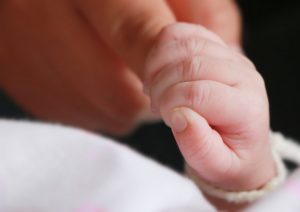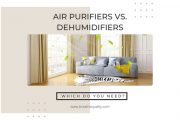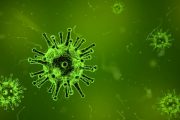When any parent comes to ask for our advice, their first and foremost question is, “Are air purifiers safe for babies?”
Obviously, the health and safety of babies are the top priorities in the lives of every parent. They will set up the nursery to be the most secure room on Earth, no matter how costly, because it is well worth it knowing that their baby is safe. Besides the crib, changing table, rocking chair, and decorations for the nursery, new parents will find an air purifier to guarantee the perfect indoor environment for their newborns.
Related posts: Best air purifiers for baby.
In this post, we will share everything you need to know about “Are air purifiers safe for babies?”
Note: If you need answers to common questions about air purifiers, please read our air purifier FAQs.
Related posts
Are air purifiers safe for babies?
Not every air purifier is safe for your babies. While most air purifiers are necessary for a baby’s room, you need to choose the safest air purifiers, which are certified by the California Air Resources Board (CARB), to meet an ozone emission concentration limit of 0.050 parts per million.
Other air purifiers without the certification of the CARB can emit ozone, which is the main component of smog and can irritate the respiratory system. Ozone can also worsen chronic respiratory diseases such as asthma and compromise the body’s ability to fight respiratory infections.
Also, you should practically choose the True HEPA filter over the ionizer or UV-C light filter because the mechanical filter doesn’t typically generate ozone. If you prefer the latter types of air filters, make sure you can turn these functions off at any time and look for CARB certification.
The rule of thumb: never buy an ozone generator for air purification purposes.
What are the benefits of an air purifier for baby?
Buying an air purifier has many benefits for improving the health of your baby. Babies, infants, and toddlers are highly vulnerable to any kind of air pollution. They also breathe 40 to 60 times per minute, which is twice the amount an adult breathes. Therefore, they will constantly draw in much more airborne pollutants at the same time.
If you think that you have a safe house to keep all the contaminants outside, think again. According to the Environmental Protection Agency (EPA), indoor air quality is up to five times more polluted than outdoor air. Your baby’s room or nursery turns out to be the place with the highest risk of air pollution. In fact, there are several airborne pollutants that your baby can breathe in.
- Dust
- Dust mites
- Pollen
- Pet dander
- Mold spores
- Bacteria
- Viruses
- Volatile Organic Compounds
- Smoke
- and more
An air purifier can effectively trap all these allergens, so your baby won’t be affected. The True HEPA filter can reduce 99.97% of all airborne allergens down to 0.3 microns in size, while the Activated Carbon filter can adsorb odors, smoke, chemicals, and volatile organic compounds (VOCs). These things are extremely important to keeping a healthy environment by filtering airborne particles and chemicals that can easily be inhaled by infants.
Below are some lists of the best air purifiers, with specialized purposes for use.
List of the best air purifiers
- 1, Best Air Purifiers (Air Purifier Ranking List)
- 2, Best Air Purifiers for Allergies and Asthma
- 3, Best Air Purifiers for Bedroom
- 4, Best Air Purifiers for Baby
- 5, Best Air Purifiers for Smoke
- 6, Best Air Purifiers for Dust
- 7, Best Air Purifiers for Mold
- 8, Best Large Room Air Purifiers
- 9, Best Air Purifiers for Pets
- 10, Best Air Purifiers for Office
Some air purifiers may come with additional features, like a humidifier function, to keep the ideal humidity level inside the nursery. That being said, it can prevent your babies from having sore throats, dry sinuses, and stuffy noses, which can lead to allergies and asthma.
Finally, the air purifier can operate quietly at times, so it will not disturb your baby’s sleep. We recommend that you read the most recent guide to the best air purifiers for baby so that you can select the best air purifier with quiet operation; some may generate pink noise, which helps your baby sleep.
Are air purifiers safe for babies? – Breathe Quality

Are air purifiers safe for babies? Yes, but only the air purifiers that are certified by the CARB, and without ozone generator function.
Course Provider: Organization
5



